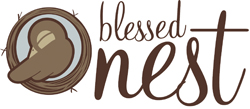1.Nursing early and often. Nurse as soon after the birth as possible, and at least ten times a day after that.
2.Ensuring that your baby is positioned well and is latched on properly.
3.Nursing "on cue". If your baby sleeps more than two to three hours during the day or four hours at night, wake him to nurse.
4.Allowing baby to finish the first breast before switching sides. This means to wait until baby falls asleep or comes off the breast on his own. There is no need to limit baby's time on the breast.
5.If your baby is not nursing at all, or is not nursing well, hand expressing or pumping your milk as frequently as baby would nurse
6.Frequent feedings: at least every 1.5 to 2 hours around the clock; let baby nurse as long as possible, no time restrictions at the breast.
7.Warm compresses can be used for a few minutes prior to a feeding if the mother desires. Use a warm, wet towel to cover the entire breast. It may facilitate milk let-down in the early stages of engorgement.
8.Gentle areolar expression can help soften the areola to assist with latch-on.
9.An electric breast pump can be used at low settings, if necessary to empty the breast enough to facilitate a latch-on.
10.Vary nursing positions to help promote drainage of the breast; use gentle massage during a feeding if it is comfortable.
11.Apply ice or cold compresses to the breasts between feedings or pumping sessions for approximately 15-20 minutes.
Raw green cabbage leaves can be used as a compress instead of ice, if desired. The leaves should be changed when wilted or after 2 hours. The breasts should be assessed for reduced swelling and enhanced milk flow with each change of cabbage leaves until the desired result is obtained.
12.A supportive bra may be helpful; avoid underwire styles at this time.
The mother may ask her doctor to suggest an anti-inflammatory drug compatible with breastfeeding for pain and swelling.
13.The mother should contact a health care professional if any of the following symptoms are present: temperature of more than 100.6 degrees F (38.1 degrees C), chills, body aches, localized pain or flu-like symptoms. Breastfeeding is not contraindicated in the case of an elevated temperature.
 Saturday, February 2, 2008 at 01:32AM
Saturday, February 2, 2008 at 01:32AM  IN THE SPOTLIGHT
Today we are placing Amygeekgrl in the spotlight. She is a Maya's Mom friend. Amy describes herself as..."passionate about breastfeeding, cloth diapering, gentle discipline, recycling, organic foods and informed healthcare decisions. I practice Attachment Parenting (or parenting by instinct) because it feels right for my family." From reading her blog I notice that she is always reaching out to new mommas. She has great information on her blog, a must read! She is also helping out with a very important fund raiser! Click on over to visit Amy she is anything but a geek! One hip momma!
IN THE SPOTLIGHT
Today we are placing Amygeekgrl in the spotlight. She is a Maya's Mom friend. Amy describes herself as..."passionate about breastfeeding, cloth diapering, gentle discipline, recycling, organic foods and informed healthcare decisions. I practice Attachment Parenting (or parenting by instinct) because it feels right for my family." From reading her blog I notice that she is always reaching out to new mommas. She has great information on her blog, a must read! She is also helping out with a very important fund raiser! Click on over to visit Amy she is anything but a geek! One hip momma!







